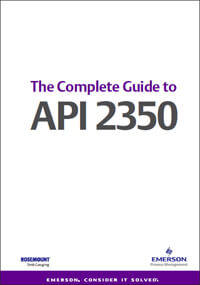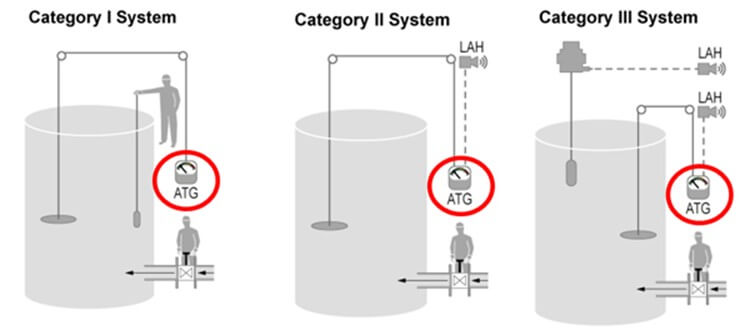
Johan Sandberg
Global Business Development Manager
He addressed the evolution of tank gauging technology from float and tape developed in the 1940s to servo motor lowering of a displacer suspended on the liquid surface developed in the 1960s, to radar level measurement initially developed and installed in the 1970s. These radar level measurement devices now comply with many American Petroleum Institute standards including API 3.1B—Standard Practice for Level Measurement of Liquid Hydrocarbons in Stationary Tanks by Automatic Tank Gauging, API 7—Temperature Measurements, API 3.3—LPG Measurements, API 3.6—Hybrid Measurements, and API 2350—Overfill Protection.
For tank overfill prevention, API 2350 specifies the use of a reliable tank gauging system and the use of a high-level alarm for category 2 and category 3 systems.
For the high-level alarm, Johan described the choice between a point-level, discrete measurement versus continuous measurement. The point-level measurements are well known, easy to understand, and inexpensive. The question is whether they work or not since there is usually no remote communications or diagnostics available and require manual proof testing to verify they are working.
Continuous level measurement provide ongoing tank level measurements, provide remote diagnostics, and allow for remote proof-testing to verify proper operation. Johan noted that the Rosemount 2410 tank hub and 5900 series Guided Wave Radar (GWR) level transmitters is certified to the IEC 61508 global safety standard for safety instrumented functions up to SIL 3.
He also highlighted 2-in-1 radar for redundancy and safety, wireless communications in radar level measurement, and monitoring floating roofs for tilt conditions—all upon which we’ve touched in earlier posts.
 Johan closed the presentation with his guidance for the future of tank gauging and overfill prevention. Radar technology is most suited for this application and it’s important to follow the API standards highlighted above. If you’re not already, become API 2350 compliant. There is a Rosemount Tank Gauging API 2350 website including The Complete Guide to API 2350 whitepaper.
Johan closed the presentation with his guidance for the future of tank gauging and overfill prevention. Radar technology is most suited for this application and it’s important to follow the API standards highlighted above. If you’re not already, become API 2350 compliant. There is a Rosemount Tank Gauging API 2350 website including The Complete Guide to API 2350 whitepaper.
Guidance also included to use radar level measurement for your high level alarm and to make sure your measurement technology is SIL certified for the safety instrumented function in which it is used.
You can connect and interact with other level measurement professionals in the Tank Gauging and Level tracks of the Emerson Exchange 365 community.





